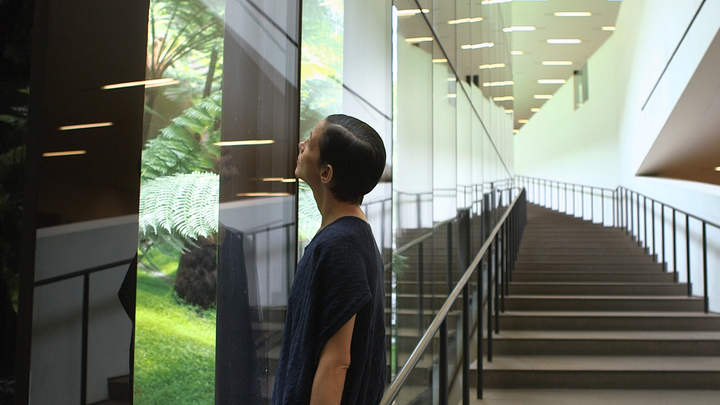Jessica Stockholder | Tablet Magazine | By Jeremy Sigler
To marvel at a work by Jessica Stockholder is not only to examine her unorthodox assembly of the world’s kit, but to wonder where on earth she shops—where she gets such good deals? Her unconventional art supplies seem to either descend from outer space, or crawl up out of dumpsters. It’s as if junk—be it new or used—has no other purpose than to animate her dystopian sculptural choreography.
One imagines Stockholder stocking up, as it were. Like a chef instinctively sniffing out the freshest ingredients (the tackiest kitschiest artifacts), she’s confident that in time the right idea for their incorporation will come.
I imagine her throwing back a shot of absinthe and embarking on an epic trip to the 99-cent store, in the same 1970s, American-made station wagon (boat) my mom used to drive—a postmodern suburban flâneur, experiencing what Walter Benjamin experienced in Paris (albeit by foot): a fetishistic fix. When the world goes on sale, it’s Stockholder who will have all the coupons.
Indeed, at its root, her process is as decadent as a department store. Picture Rooney Mara seduced by Cate Blanchett in the opening scene of Todd Haynes’ Carol. Or conversely the subtle pathos of a scene in Frederick Wiseman’s The Store (1983) where an average working man, out to please his wife, gets up-sold by a very cunning mink dealer in a Neiman Marcus in Dallas.
And while I’m a less-is-more kind of guy, when it comes to Stockholder, I make an exception. Notwithstanding, when I received a press release in my inbox for her upcoming exhibition all the way across the Atlantic Ocean—that massive ditch filled with salt water, a few fish, and a wad of plastic bags about the size of Brazil—in the old Dutch province of Utrecht, I was a tinge skeptical.
The world has changed since the last time I checked in with Stockholder. And even though I have always admired her “giant steps,” my mood has sobered, and I’d say I’ve lost my stride and swagger. When I read her show’s title, Stuff Matters, and skimmed the Centraal Museum’s PR material, I felt growing anxiety about the deeply contaminated world we now live in.




